This is a story about a car that, until relatively recently, simply didn’t exist. Not only did the BMW M8 never make production, the very existence of the singular prototype was denied for 20 years.
Just why BMW was so secretive about the project is unclear, as the number of aborted or stillborn development projects from BMW alone, most of which are well-known, could probably fill this magazine.
Sadly, we’re unlikely ever to find out, as everyone involved in the project – not that there were many – has now left the company. As such, information about the M8 is very difficult to come by.
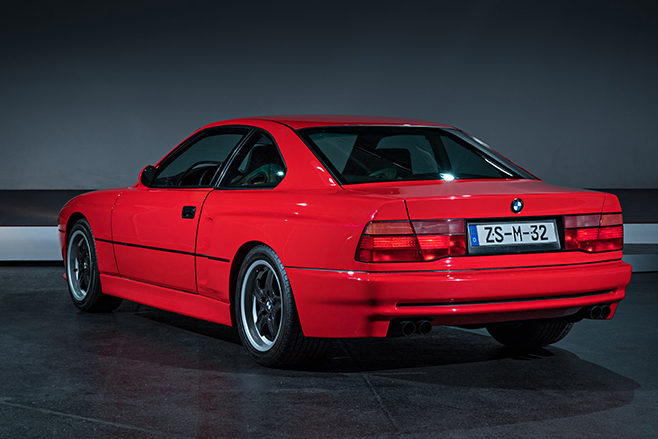
For two decades, it sat forlornly dormant deep within the bowels of BMW until in July 2010 it was shown to a select group of media at the BMW museum. Its only public appearance came two years later at the Legends of the Autobahn show in Carmel, California.
Ironically, the M8’s forgotten status may have ensured its survival. Car companies are notoriously unsentimental; a lucky few development prototypes make their way into museums, however the vast majority end up in the crusher.
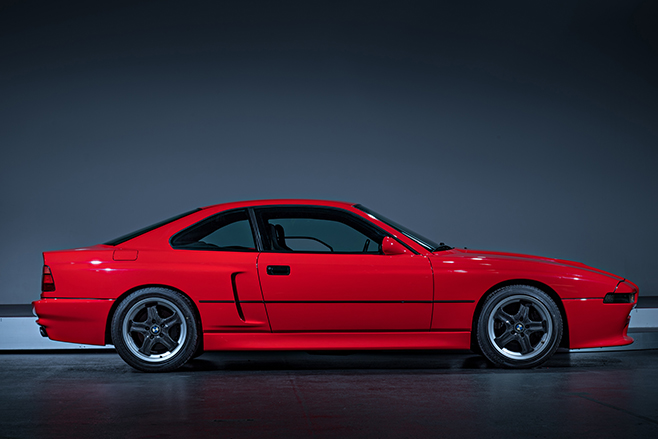
Thankfully, the M8 escaped such an undignified fate, as BMW’s vision of the ultimate V12 grand tourer is a mouth-watering prospect, with performance that would have rewritten established benchmarks in the early 1990s.
The BMW 8 Series was the baby of board member Doctor Wolfgang Reitzle, who oversaw product development for the Munich marque for a decade from 1987. Designed to be the flagship of the BMW range, this high-end luxury performance coupe was developed at enormous expense, said to be DM1.5b (about US$830m in 1989), and allowed BMW to flex its technological muscle.
The svelte body was shaped using then-radical Computer Aided Design (CAD), which combined with wind tunnel testing resulted in a wind-cheating drag coefficient of 0.29.
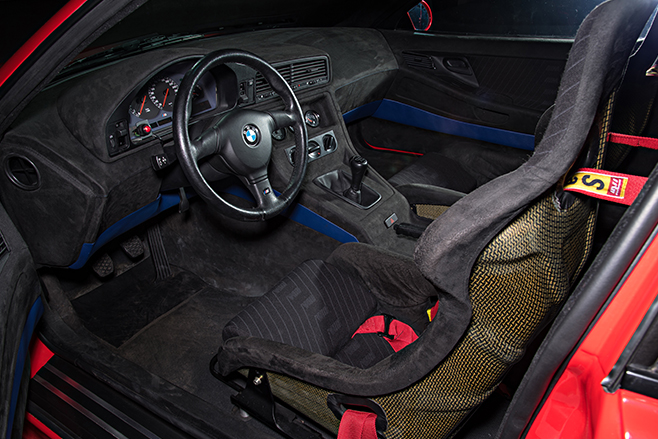
It was one of the first BMWs to use a multi-link rear axle, one of the first cars with an electronically-controlled drive-by-wire throttle, and the very first to mate a V12 engine with a six-speed manual gearbox and use a Computer Area Network (CAN bus), which quickly became the industry standard.
The 8 Series was revealed at the 1989 Frankfurt motor show, however around the same time Reitzle, engineer Karl-Heinz Kalbfell (who would go on to lead Rolls-Royce, Alfa Romeo and Maserati), engine guru Paul Rosche and chassis specialist Gerhard Richter began to investigate the possibility of a very high-performance version of the 8 Series, which could possibly lead to a GT racing program.
Key to the project would be the development of a new V12 engine, much more powerful than the existing 5.0-litre M70B50 V12, which produced only 220kW/450Nm.
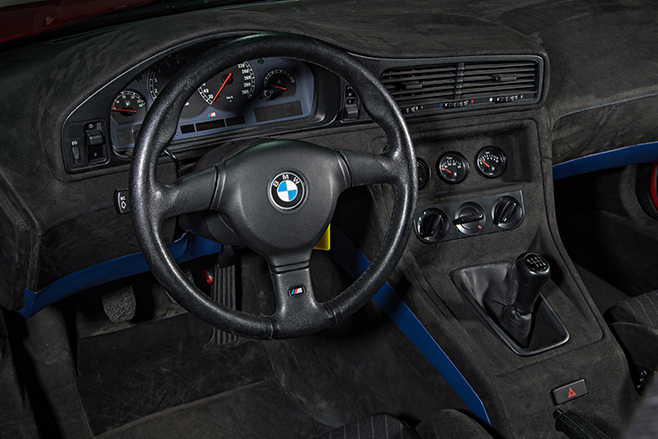
Schulte Vorwick, who worked in BMW Motorsport’s engine department, designed a new 6.1-litre V12, which was essentially two 3.0-litre straight-six engines mated together with a common crankshaft. It was dubbed the ‘S70’, the S prefix identifying it as the work of BMW’s Motorsport division.
In contrast to the M70’s highly oversquare 84 x 75mm bore and stroke dimensions, the double-overhead cam, 48-valve S70 was slightly undersquare with an 86mm bore and 87mm stroke resulting in a capacity of 6064cc.
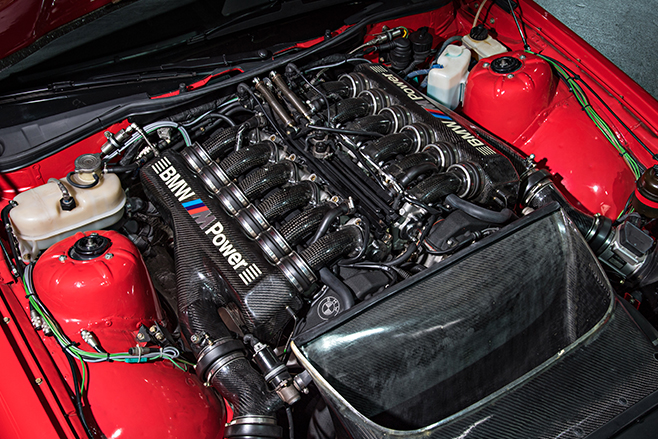
Under the bonnet the M8 is pure pornography. Twin throttle bodies feed massive carbon fibre intake manifolds, which in turn channel air to the 12 individual intake trumpets. Rosche told BMWCAR magazine: “To get good torque characteristics I needed the intake system to be as long as possible, which is why the system is as big and bulky as it is. I had trouble fitting it all under the bonnet!”
Development time was limited, with only a handful of sessions on the dyno completed, but this new 12-cylinder beast still beat out 410kW at 6000rpm and 500Nm at 5000rpm, with 90 per cent of that available from just 2000rpm. Remember, this is a time when a Porsche 928 GT managed 243kW, the most potent Chevrolet Corvette 283kW and even the mighty Ferrari F40 had 351kW.
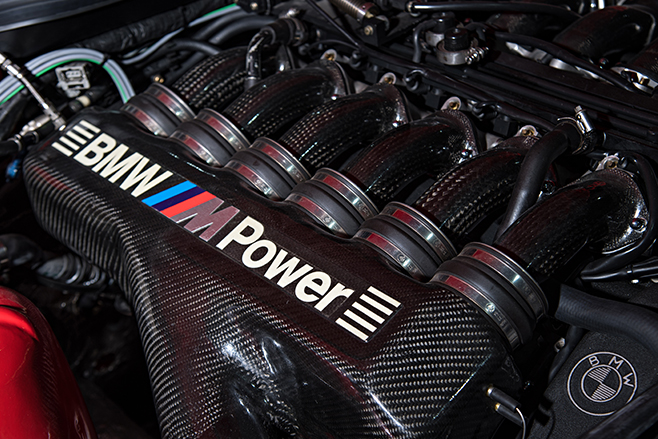
The standard Getrag six-speed manual was deemed up to the task, as was the standard 3.15:1 ratio rear diff, though the latter was modified to allow it to be cooled. A common misconception is that this engine would go on to power the McLaren F1.
A reasonable assumption, given Woking’s ground-breaking supercar also uses a 6.1-litre BMW V12 dubbed S70/2, however the two engines are largely unrelated bar sharing the same bore and stroke dimensions.
With power sorted, attention turned to sorting the 8 Series’ Achilles heel from a sporting standpoint – weight. In 850i guise, it weighed in at a hefty 1790kg, so a diet was high on the M8 development team’s agenda.
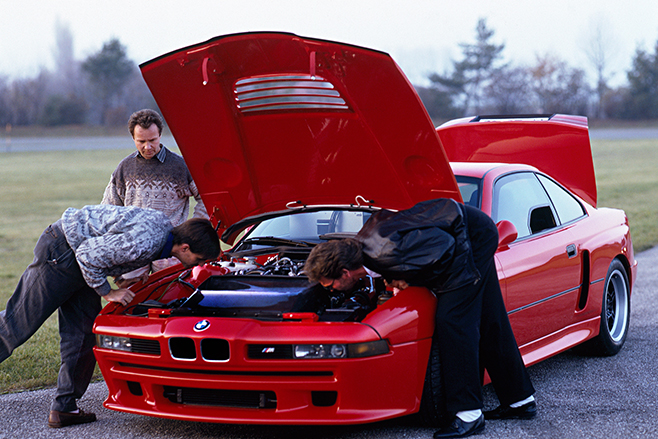
First to go were the rear seats, with the electrically-operated, leather-bound front pews replaced by lightweight Scheel racing buckets, while the pop-up headlights were also thrown in the bin.
Composite materials were still in their infancy in the automotive industry, but the M8 adopted carbon-kevlar for its dash and wheel centres. The wheels themselves measure 17 x 9.0 inches front and 17 x 10 inches rear, wrapped in relatively modest 235/45 and 285/40 rubber respectively – a current M3 Competition wears bigger boots.
Safe to say sending the rear end sideways would not have been difficult with 410kW on tap. Brakes were standard at the rear, with the fronts beefed up with 305mm discs and four-piston AP Racing calipers.
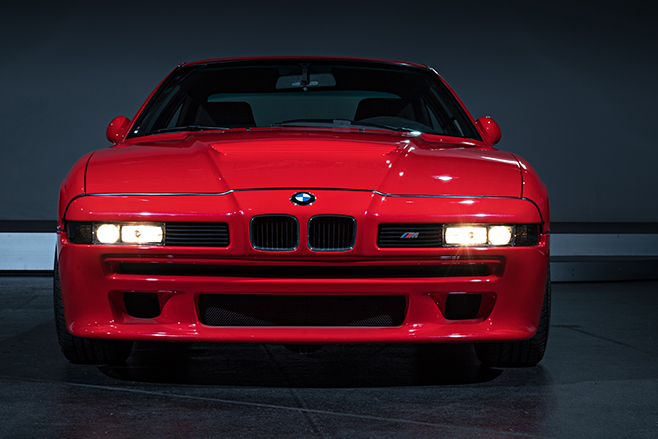
As with the engine program, a tight budget meant chassis development was limited, however the M8 did spend time at the Nurburgring. Official performance figures were also never attempted, however BMW calculated that to hit 300km/h the M8 would require around 335kW, so with 410kW 320km/h or more would have definitely been on the cards.
This would have made it not just the fastest BMW ever made, but one of the world’s fastest production cars full stop, challenging the likes of the Porsche 959 and Ferrari F40.
Despite this potential, wind-tunnel testing revealed the only modification necessary to the aerodynamic 8 Series body was the addition of two side scoops ahead of the rear wheels, the one on the left cooling the engine oil while the one on the right performs the same function for the differential oil.
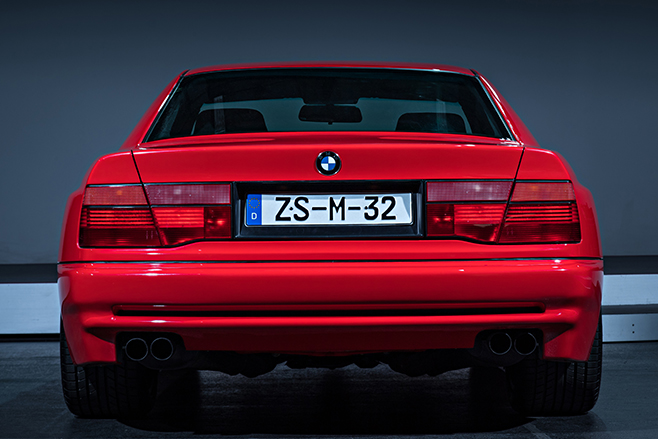
Unfortunately, all work on the M8 was soon to cease. Reitzle and Kalbfell presented the completed prototype to the BMW board in 1990 but they refused to green-light further development. Simply put, the sums didn’t add up. Even with a production run of 1500 cars, the M8’s projected price would have been DM250,000 when a Porsche 911 cost 40 per cent of that.
Not all of the M8 development work went to waste, however. Reitzle and Kalbfell revised their targets and created the 850CSi, which featured sportier suspension, bigger brakes and a 5.6-litre, single-overhead cam, 24-valve version of the S70 V12 (specifically the S70B56) producing 280kW/550Nm. Teamed with the six-speed manual gearbox, with the 250km/h limiter removed the 850CSi could nudge 300km/h.
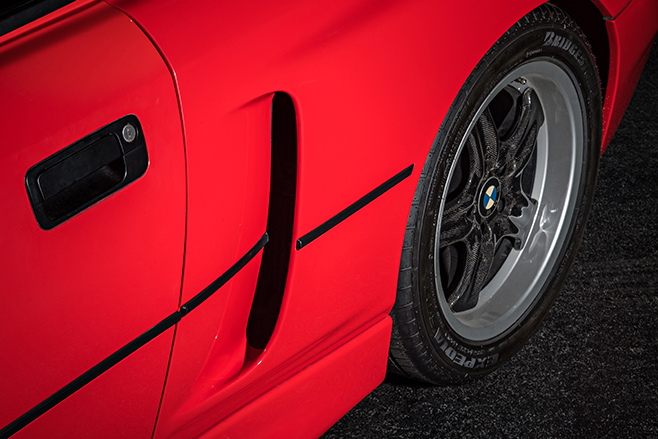
It righted many of the dynamic shortcomings of the standard 850i, yet its sales figures proved the wisdom of the BMW board’s decision. Only 1510 850CSis were sold over a four-year period from 1992-96, with just three making their way to Australia. In total, 30,603 8 Series were sold between 1989-99, with the vast majority being the 850i.
It’s likely that the market for the M8, like the car itself for so many years, didn’t exist, and it’s a market that BMW has not played in since. The decision to spend almost US$1b to sell just over 30,000 cars has no doubt played a large role in that decision.
But at least BMW is no longer ashamed of its grand touring goliath. Manufacturers are using their heritage fleets increasingly often, so hopefully the M8’s 12 cylinders will one day fire into life once again and give all enthusiasts a glimpse of its promised Ferrari-killing performance.
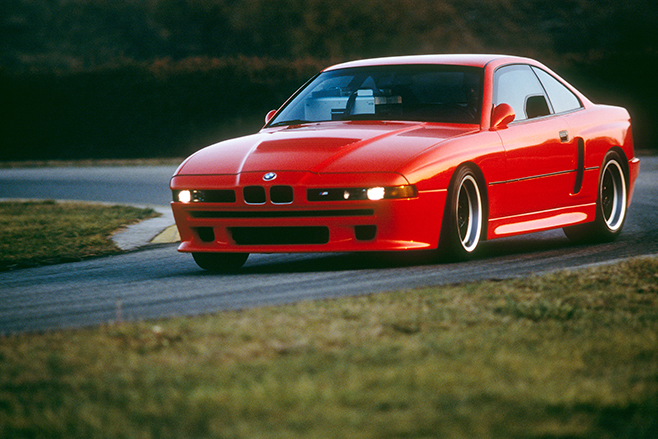
BMW M8 Prototype Specs:
Body: 2-door, 2-seat coupe Drive: rear-wheel Engine: 6061cc V12, DOHC, 48v Bore/Stroke: 86.0 x 87.0mm Power: 410kW @ 6000rpm Torque: 500Nm @ 5000rpm Brakes (f): 305mm ventilated discs, 4-piston calipers Brakes (r): TBC Wheels: 17 x 9.0-inch (f); 17 x 10.0-inch (r) Tyre sizes: 235/45 R17 (f); 285/40 R17 (r) Tyres: Bridgestone Potenza RE050A






